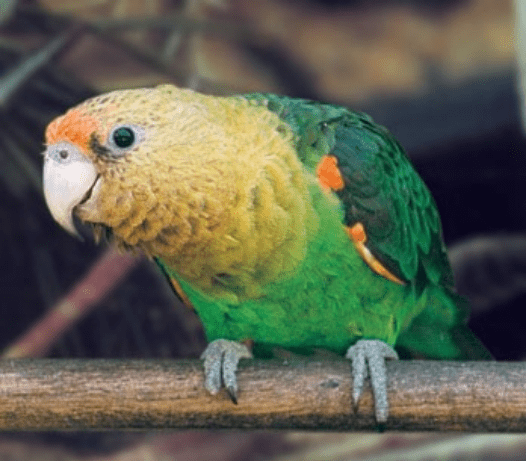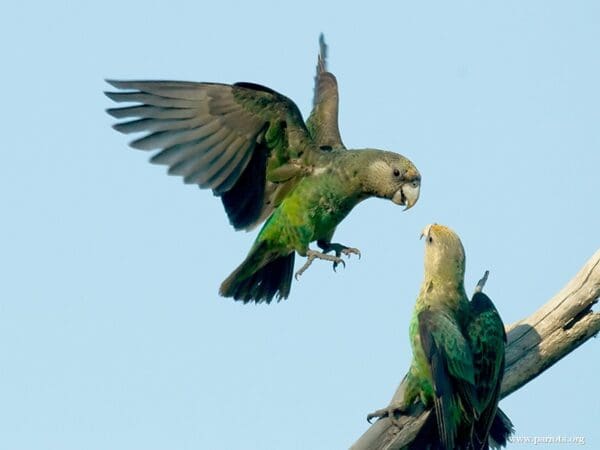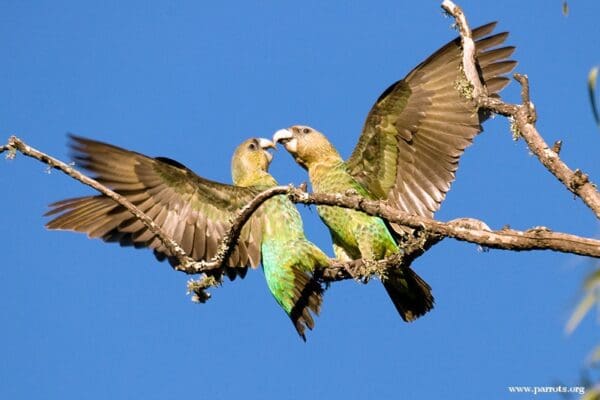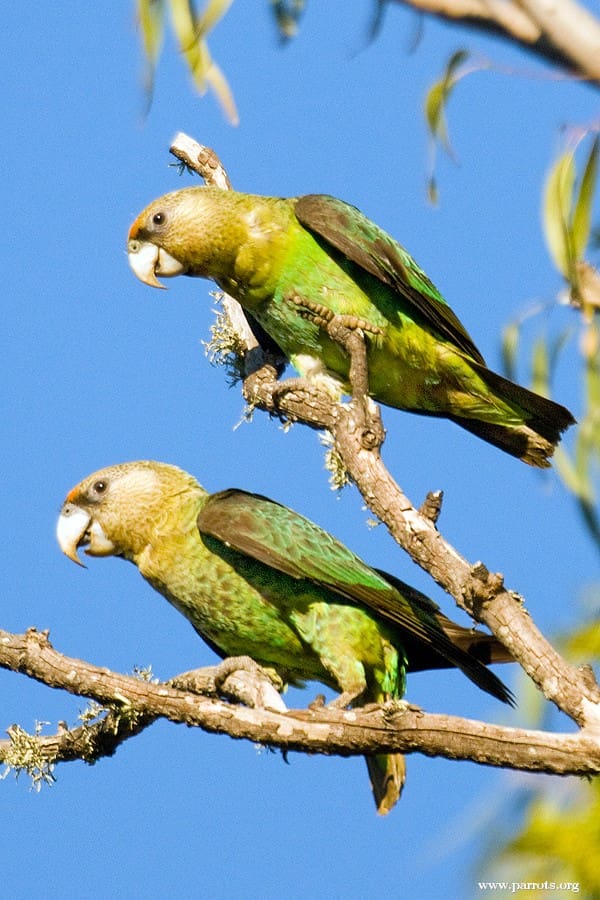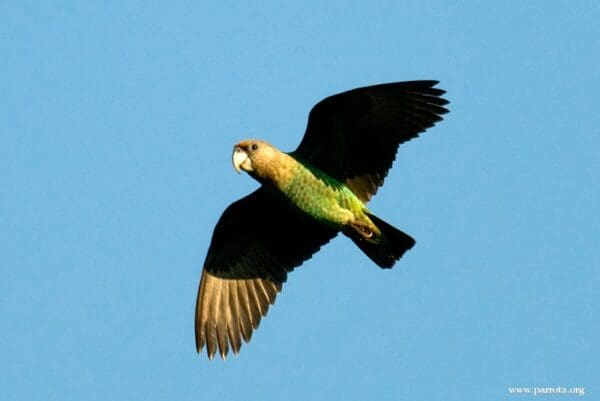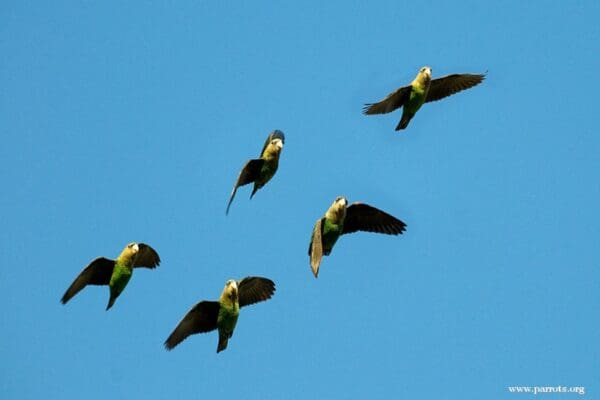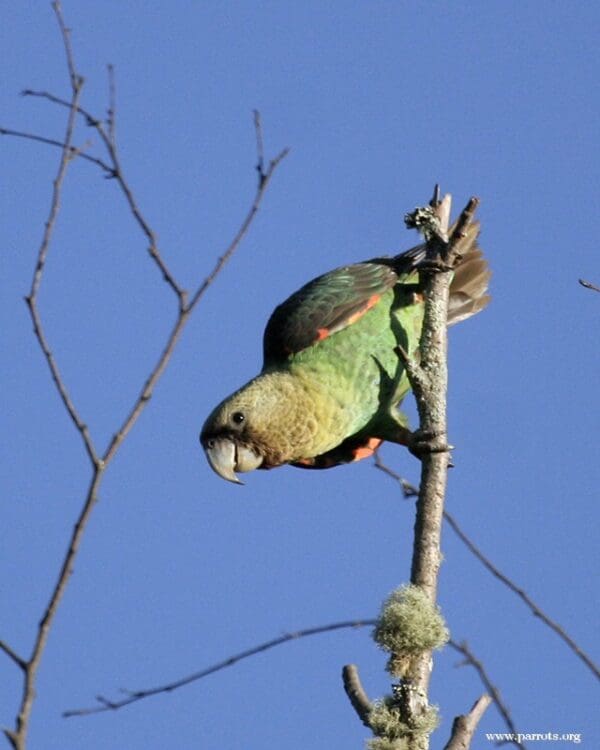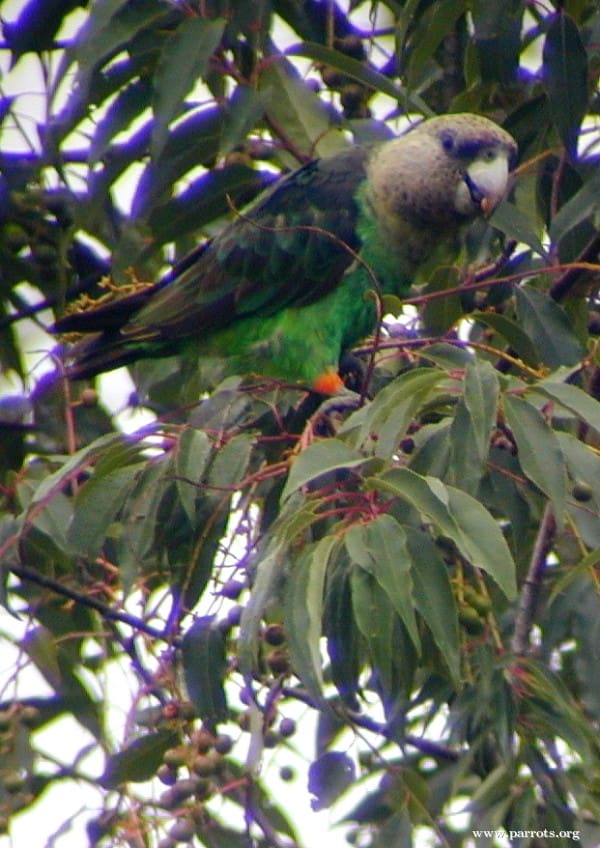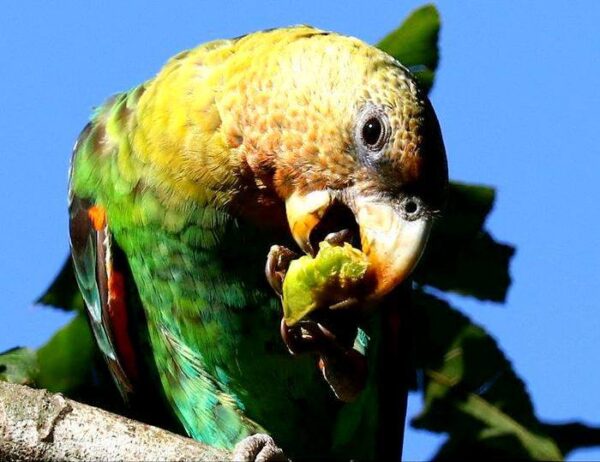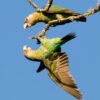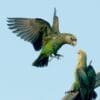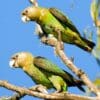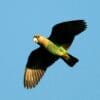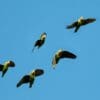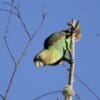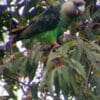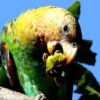DID YOU KNOW?
The Cape Parrot was once the nominate of the species Poicephalus robustus. It is now considered to be a separate species.

Poicephalus

robustus
Size:
34 cm (12.5 in)
Weight:
310-400 g (11-14 oz).
Subspecies including nominate:
one
Colour Adult:
Both adults have varying plumage; head and neck dull olive/golden, scalloped with darker brown; orange/red band across the forehead in female (absent in males); dark green back and wings; green rump and underparts (tinged with blue); orange/red thighs, bend of wing, and carpal edge; black/brown tail; dark brown eye; white/grey eye ring (bare); and horn-coloured beak.
Colour Juvenile:
Green to yellow/brown head and neck, body dark green/olive. Orange markings lacking in all juveniles. Head may appear silver after 9-12 months.
Call:
Loud, very vocal, including five distinct calls described as tzu-weee, zu-wee, zz-keek and a nasal zeek. Piercing series of screeches given in flight. Softer sounds of contentment while at rest. Voice similar to Meyer’s Parrot but more grating. Captive birds mimic human and other sounds.
More Information:
Content Sources:
CITES
Avibase
BirdLife International
Cornell Lab of Ornithology/Birds of the World
A Guide to Parrots of the World, Juniper and Parr, 1998
Parrots: Status Survey and Conservation Plan 2000-2004, Snyder, McGowan, Gilardi and Grajal, 2000.
Parrots of the World, Forshaw and Cooper, 1989.
Vanished and Vanishing Parrots, Forshaw, 2017.
Parrots of the World, Forshaw, 2006.
Parrots in Aviculture, Low, 1992.
Captive Status:
Rare
Longevity:
20-25 yrs
Housing:
Walk-in aviary, minimum length 2.1 m (7 ft), or indoor cage minimum length 1.8 m (6 ft).
Diet:
Cooked beans and pulses, boiled corn; sunflower, dry, soaked or sprouted; walnuts greatly favoured, fruit, especially apple, orange, banana, rearing food made from: hard-boiled egg, wholegrain bread and carrot, all ground to crumbly consistency; fresh vegetables such as: carrot, celery, green beans and peas in the pod; complete pellet.
Enrichment:
Bathing; foot toys, destructible (non-toxic) toys such as wooden block, vegetable tanned leather and heat sterilized pine cones; non-destructible (non-toxic plastic) toys, food-finder toys, preening toys, different texture and size hanging perch toys, fir, pine, elder or willow branches, push-and-pull toys (sliding up and down), vegetable tanned leather toys.
Nest Box Size:
Vertical box, 12″ x 12″ x 24″ (30.5 cm x 30.5 cm x 61 cm).
Clutch Size:
2 to 4
Fledging Age:
10-11 weeks
Hatch Weight:
—
Peak Weight:
—
Weaning Weight:
—
World Population:
In 2024, 1314 were counted at multiple sites, down from 2023.
IUCN Red List Status:
Vulnerable
CITES Listing:
Appendix II
Threat Summary:
Generally scarce. Threatened by habitat loss (clearance of Afromontane forest and selective logging of mature Afrocarpus/Podocarpus), illegal capture for trade and persecution as a perceived crop pest.
Range:
Endemic to eastern Republic of South Africa, from Eastern Cape Province to southern KwaZulu-Natal, with an isolated population in Limpopo Province.
Habitat:
High altitude Afromontane mistbelt yellowwood-dominant Podocarpus forest patches above 1,400 m (4,200 ft).
Wild Diet:
Diet includes fruits of the yellow-woods Podocarpus falcatus and P. latifolius, P. henkelli, Harpephyllum caffrum, Olea capensis, Mimusops caffra, Acacia molissima, A. mearnsii, Melia azedarach, Eucalyptus, Ficus, Terminalia, Calodendron capense, Prunus avium, and Commiphora. Also takes seeds of introduced Acacia mearnsii.
Ecology and Behaviour:
Feeds in trees only, preferring fruits high in the canopy and then moving down. Birds roost communally in flocks of up to 20 in large Eucalyptus or Podocarpus trees. Food nomadic that travels vast distances (up to 100 km) to preferred feeding sites, often staying for weeks to exploit food resources. Mainly arboreal, Cape Parrots come to the ground only for drinking.
Clutch and Egg Size:
2 to 4, rounded, glossy eggs, 34 x 28 mm (1.3 x 1.0 in)
Breeding Season:
August-February. Nest is in tree hollow.

